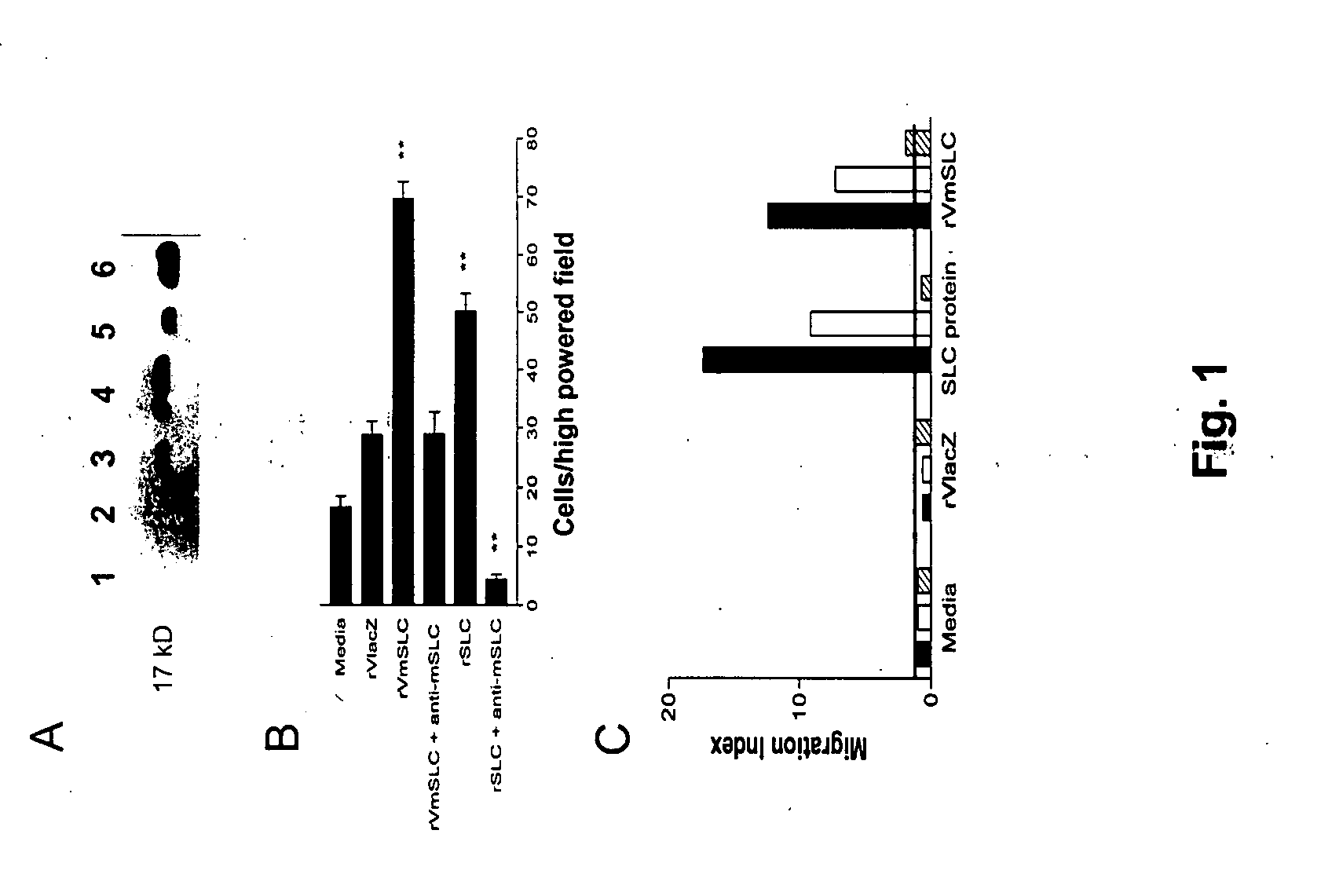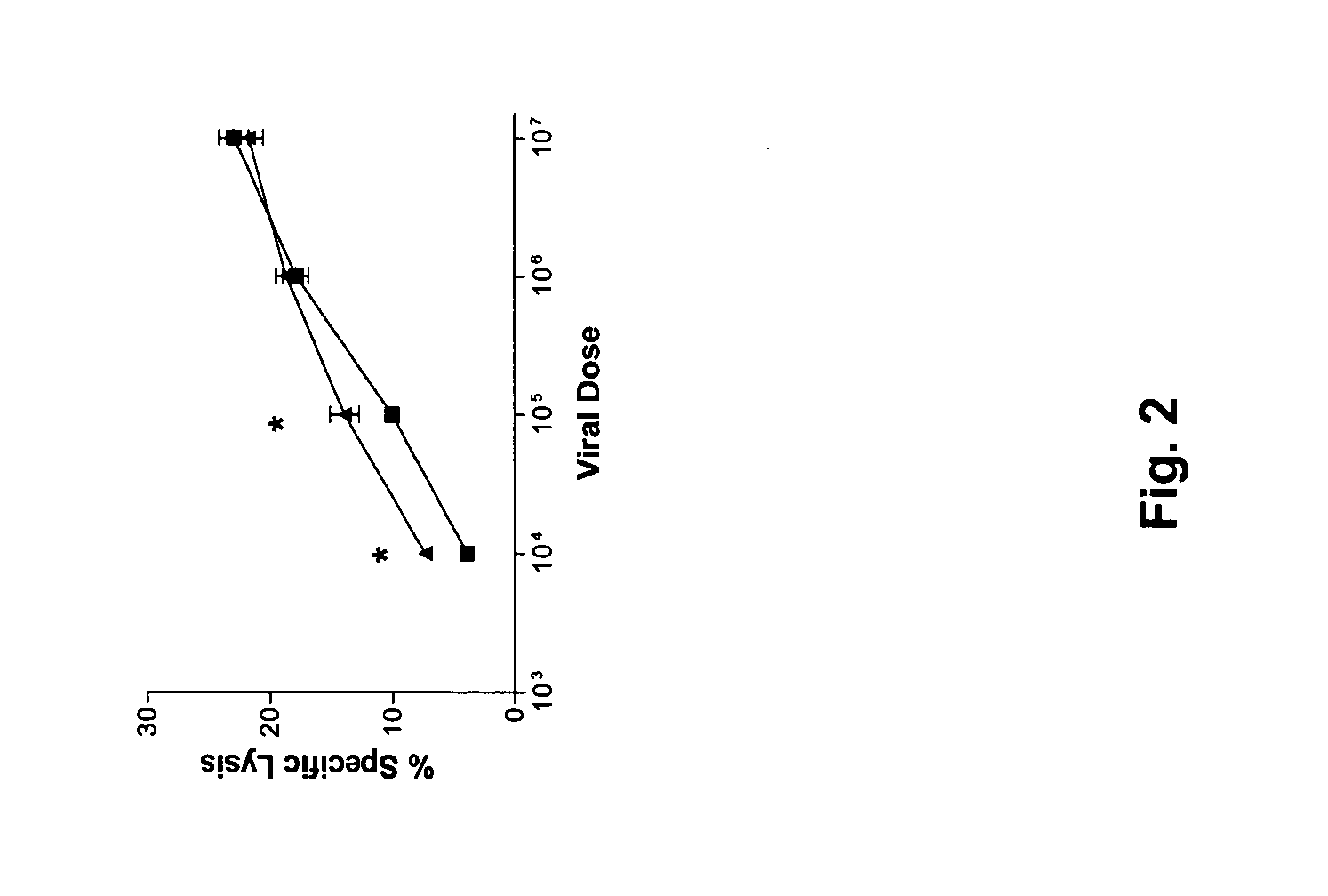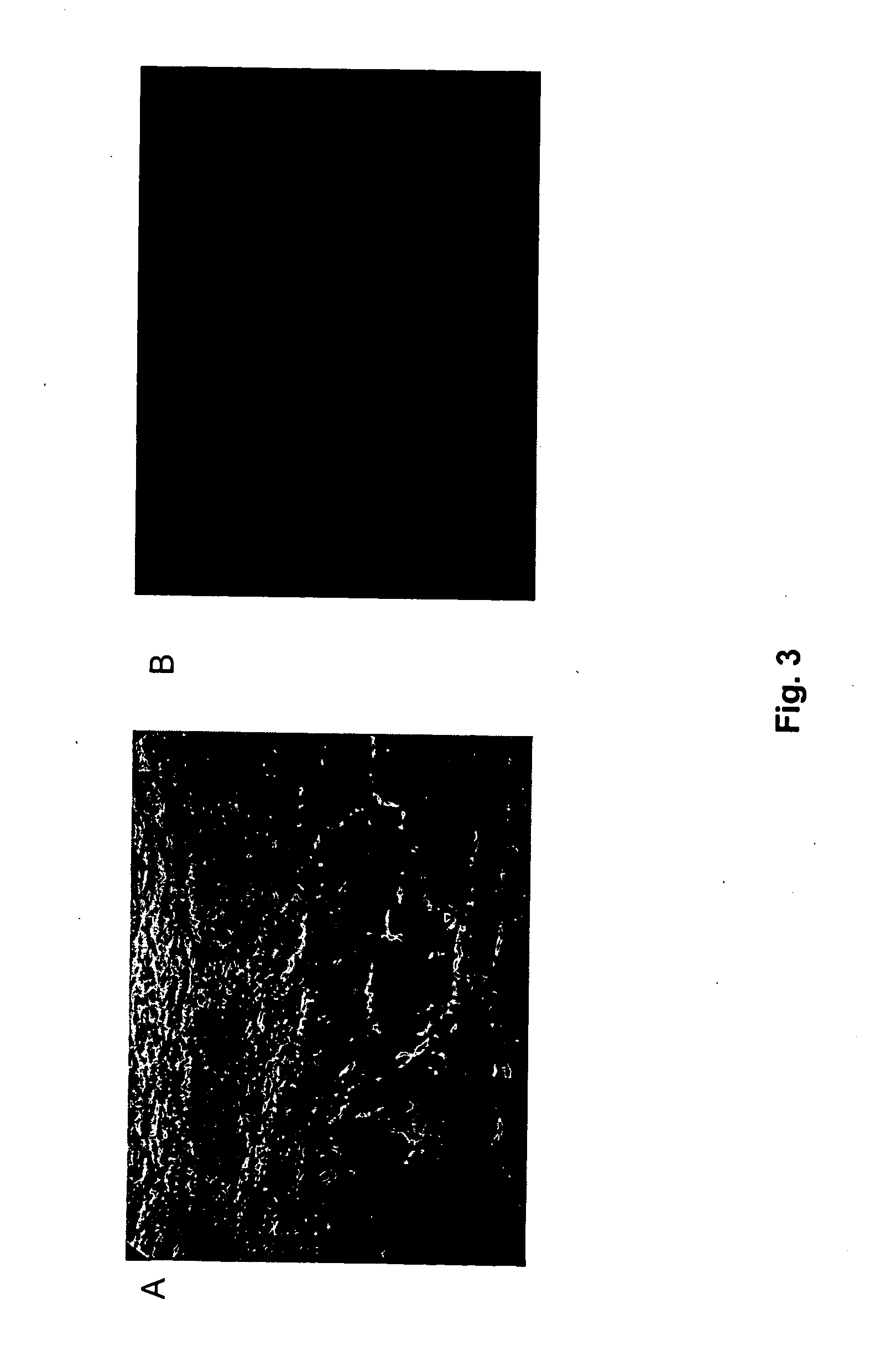Novel recombinant poxvirus composition and uses thereof
a technology of recombinant poxvirus and composition, which is applied in the direction of animal repellents, biocide, peptide/protein ingredients, etc., can solve the problems of failure of the immune system to perform its functions and diseases that remain prevalent in all segments of society, and achieve the effects of promoting the proliferation of cd4 t cells, promoting the proliferation of a cd4 t cell, and promoting the proliferation of a cd4
- Summary
- Abstract
- Description
- Claims
- Application Information
AI Technical Summary
Benefits of technology
Problems solved by technology
Method used
Image
Examples
example 1
Animals
[0066] Six to eight week old female BALB / c mice were purchased from Charles River Laboratories (Wilmington, Mass.) and housed in pathogen free conditions at the Institute for Comparative Medicine of Columbia University according to approved institutional protocols.
example 2
Cell Lines and Viruses
[0067] All cell lines were obtained from ATCC (Rockville, Md.) unless otherwise noted. BSC-1 cells and CV-1 cells are derived from African green monkey kidney cells, HeLa cells are derived from human cervical carcinoma cells, and 143B TK cells are derived from a human sarcoma cell line and lack the thymidine kinase (tk) gene. The BALB / c (H-2d) derived mouse tumor cell line CT-26 is an undifferentiated colorectal adenocarcinoma (Brattain et al., Establishment of mouse colonic carcinoma cell lines with different metastatic properties. Cancer Res. 40:2142-6, 1980) that was transfected with the human carcinoembryonic antigen (CEA) gene (designated CT26-CEA), and was obtained from Dr. Jeffrey Schlom (National Cancer Institute, Bethesda, Md.). All cell lines were grown in DMEM containing 10% FCS, lOmM L-glutamine, 100 U / ml streptomycin and 100 U / ml penicillin (complete media, reagents from Gibco BRL, Grand Island, N.Y.).
[0068] The 2.43 and GK 1.5 (ATCC) hybridomas ...
example 3
Recombinant Vaccinia Virus Construction
[0070] The construction of recombinant vaccinia viruses has been described previously (id.) and was applied with slight modifications. Briefly, mSLC was amplified by PCR from a plasmid provided by Dr. Martin Dorf (University of California, Berkeley, Calif.) using the following primers flanking the gene, with additional nucleotides for KpnI and SalI restriction sites: F-AGACGTCGACCTCAAACTCAACCACAATC and R-ATTACGGTACCTCCAGGCG GGCTACTGGG, and cloned into the KpnI and SalI sites of the recombinant vaccinia pSC65 plasmid (a generous gift from Dr. Bernard Moss, NIH, Bethesda, Md.) under control of the synthetic vaccinia early / late promoter. The plasmid also contains the selectable marker LacZ under the control of the vaccinia P7.5 promoter. The pSC65 plasmid containing the SLC gene was transfected into wild type vaccinia infected CV1 cells using lipofectamine (Gibco BRL) according to standard protocols. An empty pSC65 plasmid was similarly transfect...
PUM
| Property | Measurement | Unit |
|---|---|---|
| pore size | aaaaa | aaaaa |
| diameter | aaaaa | aaaaa |
| diameter | aaaaa | aaaaa |
Abstract
Description
Claims
Application Information
 Login to View More
Login to View More - R&D
- Intellectual Property
- Life Sciences
- Materials
- Tech Scout
- Unparalleled Data Quality
- Higher Quality Content
- 60% Fewer Hallucinations
Browse by: Latest US Patents, China's latest patents, Technical Efficacy Thesaurus, Application Domain, Technology Topic, Popular Technical Reports.
© 2025 PatSnap. All rights reserved.Legal|Privacy policy|Modern Slavery Act Transparency Statement|Sitemap|About US| Contact US: help@patsnap.com



